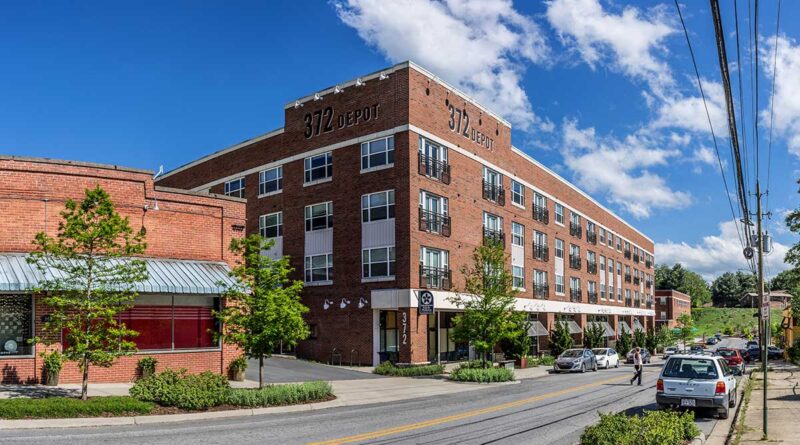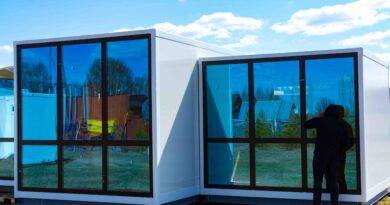Green Building For All
Green building is key to affordable housing
By Sophie Mullinax
Green-built homes afford their residents countless benefits. Healthier indoor air quality, lower energy bill, and increased comfort top the list.
These benefits should be available to all people, especially our lower-income neighbors who are more likely to suffer from health problems like asthma and be energy burdened, meaning they pay a disproportionate share of their income on energy bills.
Smart design and the healthier materials utilized by green building yield results including better indoor air quality, reduced allergens, lower utility bills and higher quality of residence — all of which are social determinants of health.
Esteemed architect William McDonough is famously credited with saying, “the building code defines the worst house allowable by law.”
When one thinks of affordable housing, an uninspired housing stock is more likely to come to mind than green building. More often than not, affordable housing is built to minimum building code standards; is constructed from cheap materials; has cookie-cutter designs; and falls into disrepair more quickly due to poor construction, design and deferred maintenance. These strategies keep costs low, ensuring maximum profitability for developers and homebuyers alike.
On the other hand, green-built construction utilizes materials that are durable and long lasting, sustainably sourced and made of healthier, non-toxic components. Energy- and water-saving appliances and fixtures are used. Designs are more innovative and exciting. These green-building features form the building blocks of homes and structures that will be comfortable, long lasting, less expensive over their lifetime and likely to emit fewer greenhouse-gas emissions due to increased energy efficiency.
These benefits translate to healthier homes, as well as lower operating costs for residents. More than eight million American households pay more than 50% of their income on housing. It is a short-sighted disservice to our communities and planet to build code-built affordable housing. The traditional mindset of building to code overlooks the myriad long-term benefits of green building, and it has been demonstrated that green building saves money while increasing occupant health and comfort.
In 2016, Virginia Tech’s Virginia Center for Housing Research and Southface Institute collaborated on a study on the impact of green-certified affordable housing. The study found that when affordable housing is green-certified (whether through Green Built Homes, LEED, Energy Star or another program), developers construct higher-quality housing at a lower cost while low-income residents save more energy and money.
Families residing in green developments saved an average of $96 per year, and seniors saved more than $122 per year more on energy costs when compared to non-green developments. Green developments save nearly $5,000 per year on owner-paid utility costs when compared to non-green developments, and total construction costs are nearly 5% less than their non-green counterparts. Soft construction cost savings (architectural, engineering, financing, and legal fees and other pre- and post-construction expenses) were even greater, costing 13% less than non-green developments due to increased coordination on the front end of design and planning.
The majority of developers surveyed in the study indicated that green buildings provide benefits in terms of quality of the end product and achieving their firm’s objectives and mission. The study admits that green buildings can be more expensive on the front end than traditional construction projects, but cost-benefits are achieved on the operations side once people are living in and using these homes. Green spaces are frequently included as criteria for green-building certifications and have been shown to reduce tenant turnover and reduce crime in multifamily developments.
In the Northeast, where the winters can be long and cold, the New York State Energy Research and Development Authority helped finance energy improvements at nearly 100,000 apartments across the state, bringing both new construction and existing buildings up to the federal ENERGY STAR® standards and cutting their energy costs by a quarter on average. All of these apartments were tested on their actual utility expenses as part of the program, and savings were nearly $400 per unit annually.
I am heartened that affordable housing seems to be increasingly thoughtfully planned while incorporating green and sustainable features. Certified green-built and sustainably-built homes are what people want and deserve. I dream of the day when all affordable housing is certified as green. Building green and sustainable affordable housing benefits everyone involved — landlords, developers, tenants and neighbors — and it’s the right thing to do for our communities.
 Sophie Mullinax is a former program manager for Green Built Alliance in Asheville, NC. Learn more at www.greenbuilt.org.
Sophie Mullinax is a former program manager for Green Built Alliance in Asheville, NC. Learn more at www.greenbuilt.org.


